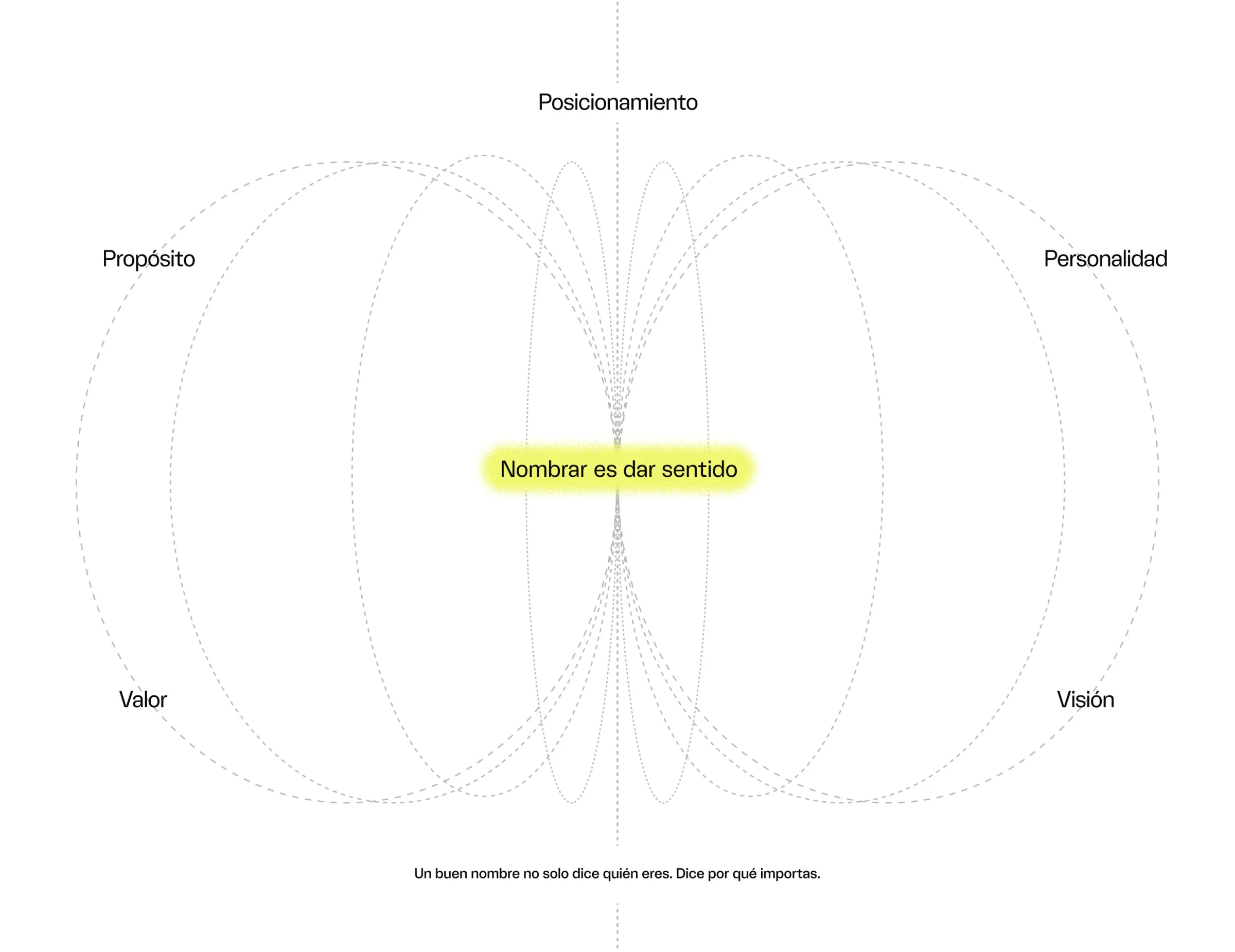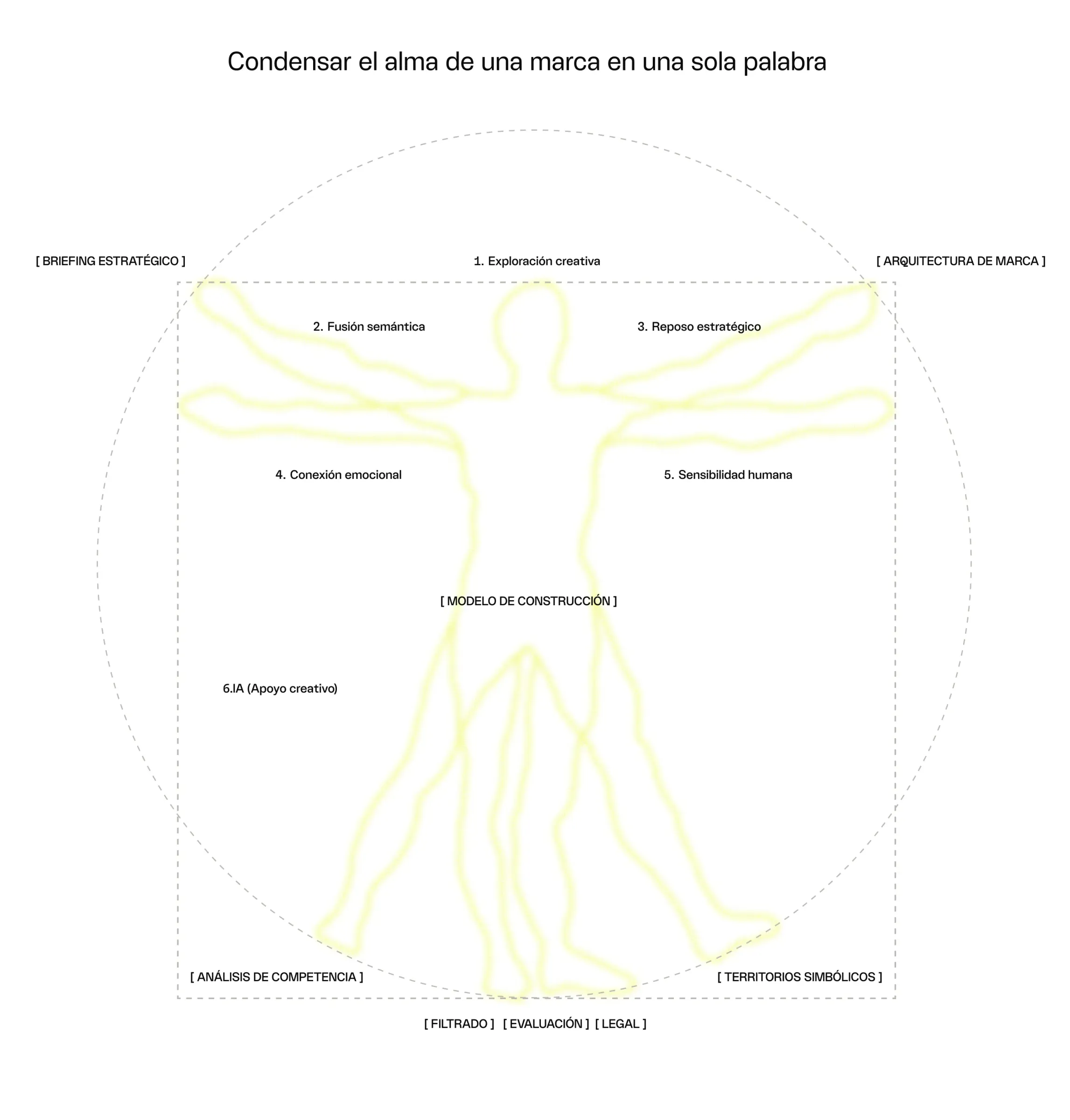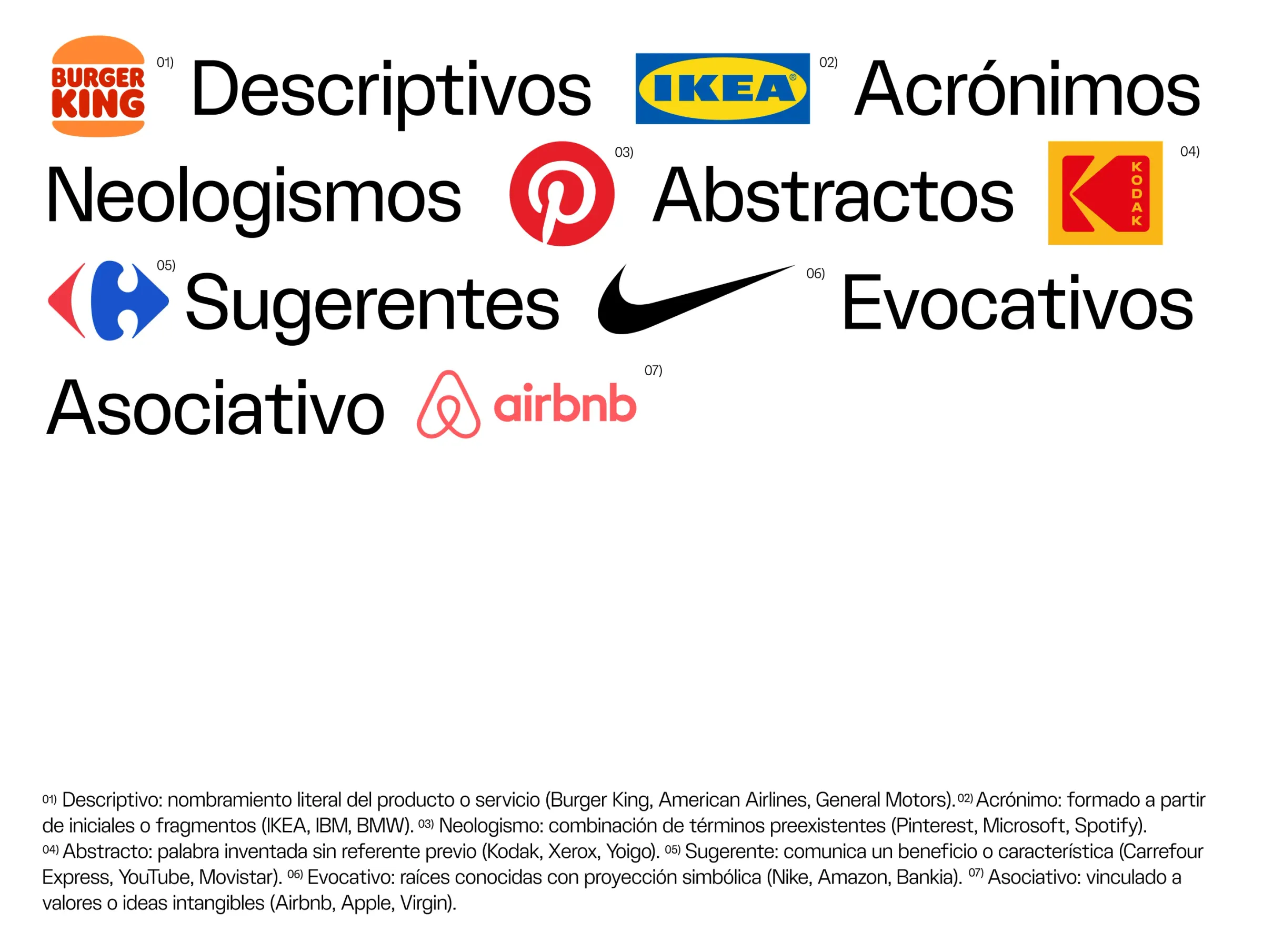In love, as Juliet said, perhaps the name does not matter. But in the world of brands, it is everything. In branding, a name does not just name: it means.
From our experience, we know that naming is the first symbolic gesture of a brand. It is the first thing presented to the world, the first word that opens the door to the public's imagination. And, as such, it determines how it will be remembered, sought after, pronounced, desired... or even rejected.
As Naseem Javed, president of ABC Namebank, said:
«Having a bad name is the best help for the competition».
— Naseem Javed, President of ABC Namebank
The name as meaning, not as a word
A good name is not a creative whim. It is a strategic decision. We treat it as a tool to activate, in a single word, all the meaning that a brand wants to occupy in the lives of its audience.
That is why, before we start creating names, we always work on a solid brand platform: purpose, personality, value proposition, vision and positioning.
For us, a good name must:
- Activate the role that the brand wants to play.
- Summarise its value proposition.
- Become a verbal symbol of the territory of meanings that the brand inhabits.
Naming is not labelling. It is giving meaning. We like to think of it as an invitation to enter a universe of its own. Because a good name not only says who you are, but why you matter.

A name that connects and endures
Every day we come across dozens, even hundreds, of names. Some are forgotten instantly. Others stick in our minds. What makes them different?
We have seen that an effective name fulfils two key functions: it excites and it works:
- It excites because it must sound like what we want people to feel. If a brand seeks to inspire, its name cannot sound cold. If it seeks to protect, it has to sound trustworthy.
- It works because it must be easy to find. It has to meet SEO criteria, be available as a domain, work on social media, and be registrable without legal conflicts.
Furthermore, a good name must look to the future. It must not only serve today, but also accompany the brand in its growth and evolution.
There are clear examples of this. Airbnb, for example, started out as a solution for renting inflatable mattresses in shared flats (‘air bed and breakfast’). Today, it is a global experiential tourism platform. Apple, for its part, started out with computers, but its name never limited it: today, it is synonymous with technology, design and lifestyle. In both cases, the name became a container open to new territories.
We also see this in the transformation from Cepsa to MOEVE, where the name change was not a simple aesthetic rebranding, but a strategic leap: moving from being perceived as a traditional oil company to positioning itself as a player in mobility, technology and energy of the future. A name that enables new territories, projects new opportunities and does not limit growth.
Because naming well is not just about getting found. It's about making people want to find you. A good name is not imposed: it is discovered. And when that happens, a genuine connection is born.
Naming from a system
In branding, nothing exists in isolation. And the name is no exception.
That's why, before creating a name, we analyse the system in which it will exist. We ask ourselves: What role will this brand play within the company's global ecosystem?
- Is it a main brand or a sub-brand?
- Does it extend an existing line or launch a new category?
- Should it sound related to other brands or mark a break?
- Should it inherit brand equity or start from scratch?
Brand architecture, when applicable, defines these relationships. And those relationships directly influence the tone, style, and construction of the name.
Naming a product within a family (such as ‘iPhone’ within Apple) is not the same as creating an independent brand (such as ‘Nespresso’ within Nestlé).
For us, a good name should not break the system, but rather integrate with it, enhance it and make it more understandable. Because brands do not exist in a vacuum: they share spaces, experiences and narratives. Good naming is about designing meaningful relationships.

The method: naming with heart and mind
Naming is an art, yes. But it is also a method. In our work, we approach it with structure, clarity and purpose.
This is the process we follow to generate effective naming:
- Strategic briefing: in-depth understanding of the brand platform (if it exists; if not, this is the first essential step).
- Defining the place in the brand architecture.
- Analysis of competition and parallel categories: what do others do and how do they name themselves?
- Identification of semantic and symbolic territories: concepts, values, imagery associated with the brand.
- Selection of the construction model: here we define how the name will be materialised, choosing between different approaches:
- Descriptive: literal name of the product or service. Examples: Burger King, American Airlines, General Motors.
- Acronyms: formed from initials or fragments of words. Examples: IKEA, IBM, BMW.
- Neologisms: combination of pre-existing terms that gives rise to a new name. Examples: Pinterest (pinboard + interest), Microsoft, Spotify.
- Abstract: invention of a word with no previous reference. Examples: Kodak, Xerox, Yoigo.
- Suggestive: directly convey a benefit or characteristic of the brand. Examples: Carrefour Express, YouTube, Movistar.
- Evocative: created from known roots with symbolic or cultural significance. Examples: Nike, Amazon, Bankia.
- Associative: linked to intangible values, ideas or attributes. Examples: Airbnb, Apple, Virgin.
- Free creative exploration: massive generation of ideas without filters.
- Semantic fusion: creative combinations of concepts, sounds and words to create new and relevant meanings.
- Rest: let it rest and review with a fresh eye.
- Strategic and emotional filtering: connection, differentiation, memorability, idiomatic appropriateness.
- Shortlist: selection of between 10 and 20 names.
- Legal and digital review: registrations, domains, networks.
- Evaluation with strategic panel: scoring for strategy, creativity and consistency.
- Presentation of finalists: with narrative, argumentation and storytelling.
- Legal registration and domain purchase.
In this process, it is increasingly common to incorporate artificial intelligence tools as creative support: to generate lists of words, explore semantic associations, or propose combinations. Always as a complement, never as a substitute. Because AI can offer volume, but judgement, strategic direction, and sensitivity remain human responsibilities.
Each of these steps is designed to ensure that the result is not only creative, but effective. Naming, after all, is condensing the soul of a brand into a single word.

A name with a role
Every brand is born with an intention. And its name must reflect that from the outset.
- If it protects, it must sound secure.
- If it empowers, it must sound strong.
- If it inspires, it must sound like a dream.
Names do not just inform. They build archetypes, project attitudes and anticipate experiences.
Our goal is always for the name to do more than just describe; it must express with strength and clarity.
Beyond sound: a name that resonates
A name is not evaluated solely on how it sounds. It is evaluated on how it feels.
We seek to resonate with the emotional territory of the brand, activate the desired imagery, and allow it to grow without losing its identity.
That is why we say that the name is the verbal DNA of a brand.
Just as the logo is engraved on the retina, the name is engraved on the mind. And on the heart (L).
Not everything has been invented, but everything must be discovered
We know that there are more than 82,5 million registered trademarks in the world. It may seem that everything has been invented. But it hasn't.
The best name for a brand has not yet been created: it is waiting to be discovered.
With the right process, method and sensitivity, it can be found. Because, as Plato said:
«Every object has a natural name; you just have to discover it».
— Plato
